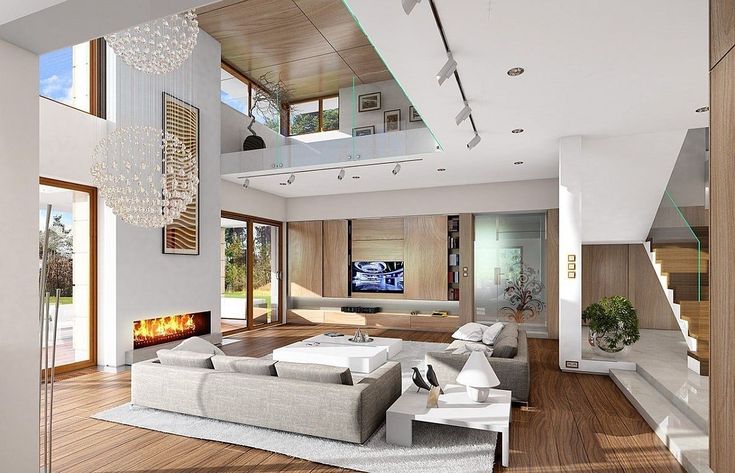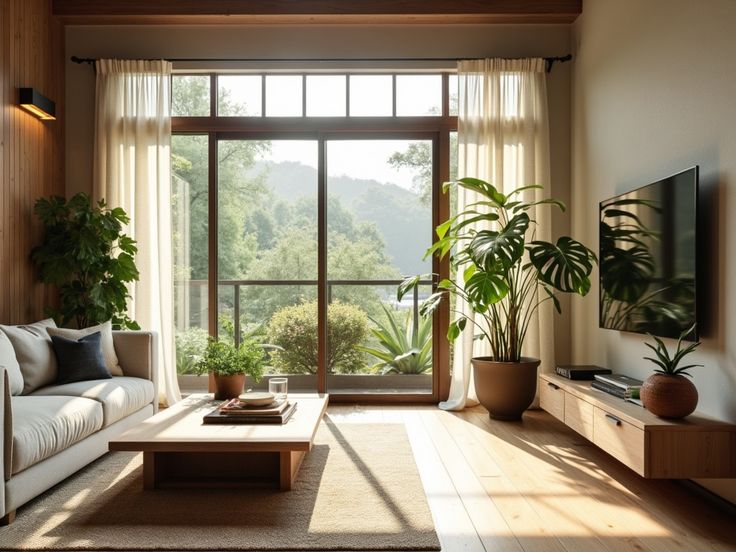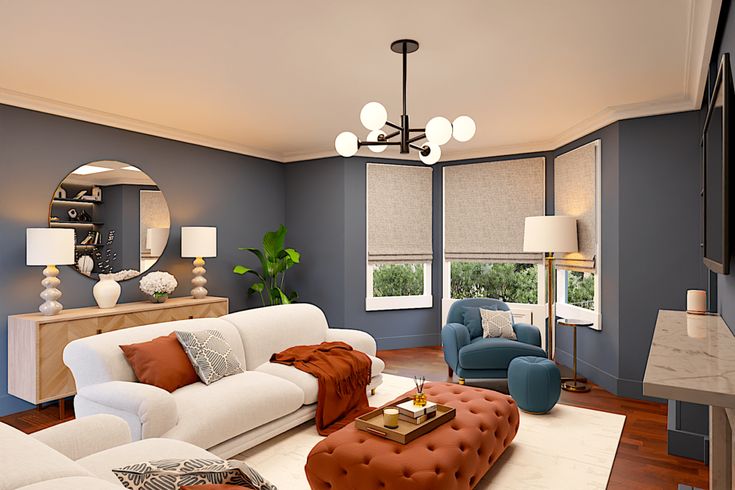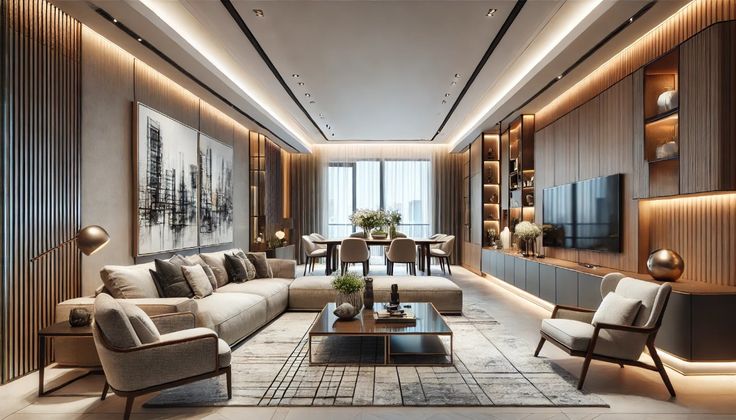Maximizing Every Inch: The Ultimate Guide to Small Home Interior Design (Genius Space-Saving Ideas!)
Maximizing Every Inch: The Ultimate Guide to Small Home Interior Design (Genius Space-Saving Ideas!) – Small homes often come with big dreams. Whether you’re living in a compact apartment or a tiny house, creating a stylish and functional space can be both a challenge and an opportunity. In this ultimate guide to small home interior design, we’ll explore ingenious space-saving ideas that not only maximize every inch of your living area but also transform your home into a beautiful, efficient haven. Read on for expert tips, creative hacks, and design strategies that promise to revolutionize your approach to interior design.
Understanding the Challenges of Small Spaces
Before diving into creative solutions, it’s important to recognize the inherent challenges that come with designing small spaces:
- Limited Square Footage: With less room to work with, every item counts. A poorly planned layout can quickly feel cluttered and cramped.
- Multi-Functional Needs: In smaller homes, rooms often serve dual purposes. A living area might double as a workspace or even a guest bedroom.
- Storage Constraints: Finding space to store everyday items while keeping the environment organized can be daunting.
- Illumination and Perception: Small spaces may suffer from limited natural light, affecting the overall ambiance and perceived size of the area.
Understanding these challenges lays the groundwork for developing targeted strategies that turn constraints into opportunities. The following sections explore how you can creatively address these issues and design a space that feels both expansive and inviting.
Embracing Multi-Functional Furniture
One of the cornerstones of small home interior design is selecting furniture that serves more than one purpose. Multi-functional furniture is not just a trend—it’s a necessity for maximizing every inch of your home. Consider these innovative ideas:
1. Sofa Beds and Daybeds
- Dual Functionality: A sofa that transforms into a bed offers comfort during the day and an extra sleeping space at night.
- Space Efficiency: Ideal for studios or guest rooms, these pieces help you avoid dedicating an entire room solely for sleeping arrangements.
2. Extendable and Foldable Tables
- Dining and Work: An extendable dining table can accommodate a larger number of guests when needed, then retract for a streamlined look.
- Convertible Desks: Foldable desks that can be tucked away when not in use free up floor space for other activities.
3. Storage Ottomans and Benches
- Hidden Storage: Ottomans with built-in storage are perfect for stashing blankets, magazines, or even children’s toys.
- Seating and Storage: Benches in entryways or living rooms provide a dual function—seating for guests and space for essentials.
Investing in multi-functional furniture is a smart way to make your space work harder without overcrowding it. When shopping, look for sleek designs that offer storage, transformation, and aesthetic appeal.
Maximizing Natural Light
Natural light plays a crucial role in small home interior design. It not only illuminates your space but also makes it feel larger and more open. Here are some proven strategies to enhance natural light in your home:
1. Choose Light, Reflective Colors
- Wall Colors: Whites, creams, light grays, and pastels can make a room feel airy and bright.
- Ceilings and Floors: Light-colored ceilings and reflective flooring materials, like glossy tiles or light hardwood, further enhance illumination.
2. Utilize Mirrors Strategically
- Light Reflection: Placing mirrors opposite windows can reflect natural light deeper into the room.
- Illusion of Space: Large mirrors can also create an illusion of additional space, making your room appear more expansive.
3. Keep Windows Unobstructed
- Minimal Window Treatments: Opt for sheer curtains or simple blinds that allow light to filter through without overwhelming the space.
- Clean Windows: Regular cleaning ensures that your windows remain crystal clear, maximizing the amount of sunlight that enters.
4. Consider Skylights or Solar Tubes
- Additional Light Sources: If your budget and layout allow, adding a skylight or solar tube can dramatically boost natural light, especially in areas that typically feel dark.
By maximizing natural light, you can create a welcoming and spacious environment, even in the smallest of spaces.

Creative Storage Solutions
Storage is a perennial challenge in small homes, but with the right creative strategies, you can keep your living space tidy without sacrificing style. Here are some space-saving storage ideas:
1. Vertical Storage
- Tall Shelving Units: Utilize vertical wall space with tall shelves or bookcases that reach the ceiling. This draws the eye upward, creating a sense of height.
- Wall-Mounted Cabinets: Install cabinets or floating shelves that free up valuable floor space while offering storage for books, decor, and everyday items.
2. Built-In and Hidden Storage
- Custom Built-Ins: Tailor-made built-in storage solutions, such as window seats with hidden compartments or built-in bookcases, maximize every nook and cranny.
- Under-Bed Storage: Use rolling bins or drawers under your bed to store seasonal clothing, shoes, or other items you don’t need every day.
3. Multipurpose Furniture with Storage
- Storage Benches and Ottomans: As discussed earlier, these items double as seating and hidden storage.
- Fold-Out Desks and Tables: Look for furniture that not only serves multiple functions but also provides storage space within its design.
4. Over-the-Door Organizers
- Entryway and Closet Solutions: Over-the-door racks and organizers are perfect for shoes, accessories, or cleaning supplies, making use of otherwise wasted space.
These creative storage solutions are essential for maintaining an organized environment. When your items have a designated place, your home feels less cluttered and more spacious.
The Power of Color and Lighting
Color and lighting are two powerful tools in the arsenal of small home interior design. Used wisely, they can alter the perception of space, making rooms appear larger and more welcoming.
1. Choosing the Right Color Palette
- Light and Neutral Tones: Whites, beiges, and light pastels are excellent choices for walls and larger furniture pieces as they reflect light and create an airy feel.
- Accent Colors: Introduce bold colors through accessories like cushions, artwork, or decorative items. This adds character without overwhelming the space.
- Consistent Color Schemes: Maintaining a cohesive color scheme throughout your home prevents visual clutter and makes the space feel unified.
2. Effective Lighting Techniques
- Layered Lighting: Combine ambient, task, and accent lighting to add depth and dimension to your space.
- Ambient Lighting: Ceiling fixtures or recessed lighting provide overall illumination.
- Task Lighting: Desk lamps or under-cabinet lights offer focused lighting for work or reading areas.
- Accent Lighting: Decorative lamps or wall sconces can highlight artwork or architectural features.
- Dimmable Lights: Installing dimmers allows you to adjust the lighting intensity according to the time of day or activity, creating a flexible environment.
3. Reflective Surfaces and Finishes
- Glossy Finishes: High-gloss paint or lacquered furniture can reflect light and contribute to the spacious feel of a room.
- Metallic Accents: Incorporating metallic decor items or fixtures not only adds a modern touch but also helps bounce light around the room.
By carefully selecting your color palette and lighting scheme, you can manipulate the atmosphere of your small home to make it feel open and vibrant.

Clever Layout and Zoning
In small home interior design, every square foot counts. A well-thought-out layout can transform a cramped space into a comfortable, functional home. Consider these zoning and layout strategies:
1. Open Floor Plans
- Seamless Transitions: Open layouts eliminate unnecessary walls and barriers, allowing for a more fluid movement between areas.
- Dual-Purpose Spaces: An open floor plan enables you to create zones within a single space. For instance, a living area can seamlessly transition into a dining space or a home office.
2. Defined Zones
- Area Rugs and Lighting: Use area rugs to demarcate different zones. Similarly, strategic lighting can highlight specific areas, such as a reading nook or a workspace.
- Furniture Arrangement: Position furniture to define distinct areas without the need for physical partitions. For example, a sofa can serve as a divider between a living room and a dining area.
3. Multi-Level and Vertical Zoning
- Loft Spaces: If your ceiling height allows, consider incorporating a loft or mezzanine level to create additional living space without expanding the footprint.
- Vertical Dividers: Shelving units or folding screens can be used as vertical dividers to separate different functional areas while still allowing light to flow freely.
4. Flexibility in Design
- Modular Furniture: Choose furniture that is easy to move or reconfigure. This flexibility allows you to adapt your layout as your needs change over time.
- Convertible Spaces: Consider rooms that can serve multiple purposes. A guest room can double as a home office or a gym, for example, by using convertible furniture and smart storage.
A strategic layout not only maximizes functionality but also enhances the aesthetic appeal of your small home. Each zone should have a clear purpose, contributing to an overall design that feels cohesive and uncluttered.
Incorporating DIY and Budget-Friendly Ideas
Transforming a small space doesn’t have to break the bank. Many ingenious, budget-friendly solutions can help you achieve a high-end look without the hefty price tag. Here are some DIY and cost-effective tips for small home interior design:
1. Upcycling and Repurposing Furniture
- Revamp Old Pieces: Instead of buying new furniture, consider refurbishing old or second-hand pieces. A fresh coat of paint or new upholstery can give them a modern twist.
- Creative Repurposing: Turn unexpected items into functional decor. An old ladder, for example, can be repurposed as a bookshelf or a unique display stand.
2. DIY Storage Solutions
- Custom Shelving: Build your own shelving units using inexpensive materials like reclaimed wood or industrial piping. Custom shelves not only save money but also add a personalized touch to your home.
- Handmade Organizers: Craft your own storage organizers from cardboard or fabric. These DIY projects can be tailored to fit your exact needs and dimensions.
3. Budget Decor Ideas
- Thrifting and Flea Markets: Hunt for unique decor pieces at thrift stores, flea markets, or online marketplaces. Often, you can find high-quality items for a fraction of the cost.
- Artisan Touches: Support local artisans by purchasing handmade decor items. These pieces add character and a story to your space without requiring a large investment.
4. Smart Shopping Strategies
- Seasonal Sales and Discounts: Keep an eye out for sales at your favorite home decor stores. Planning your purchases around seasonal discounts can save you a significant amount of money.
- Do-It-Yourself Projects: Platforms like Pinterest and YouTube offer a treasure trove of DIY projects that can help you customize your space without spending much.
DIY and budget-friendly ideas empower you to create a personalized, stylish environment that truly reflects your taste and needs.
The Importance of Minimalism
When space is limited, minimalism is more than just an aesthetic—it’s a lifestyle. Adopting a minimalist approach to interior design can drastically improve the feel of your small home.
1. Decluttering for a Cleaner Look
- Essential Items Only: Focus on keeping only what is necessary. Regularly assess your belongings and remove items that no longer serve a purpose.
- Smart Storage: Implement storage solutions that hide clutter out of sight, ensuring that only curated, meaningful items are on display.
2. Streamlined Furniture and Decor
- Less is More: Choose furniture with clean lines and minimal ornamentation. Avoid bulky pieces that overwhelm the space.
- Functional Art: Opt for decor that serves a purpose. For instance, a well-designed clock or a sculptural piece can be both a functional item and an art piece.
3. Psychological Benefits
- Enhanced Focus: A clutter-free environment can boost mental clarity and reduce stress. In small spaces, where every object is noticeable, minimalism can help maintain a sense of order and calm.
- Increased Flexibility: A minimalist space is easier to reconfigure. With fewer items in the way, you can easily adapt your layout as needed.
Embracing minimalism not only maximizes physical space but also creates a peaceful, inviting atmosphere that enhances your overall quality of life.

Smart Technology Integration
Modern technology offers a host of solutions tailored for small home interior design. Integrating smart devices and home automation can help streamline your daily routines and optimize space usage.
1. Smart Home Systems
- Automation: Smart lighting, thermostats, and security systems can be controlled via mobile apps or voice commands, reducing the need for extra switches and remote controls cluttering your space.
- Energy Efficiency: These systems often come with energy-saving features, which is a bonus for both the environment and your utility bills.
2. Multi-Functional Gadgets
- Compact Appliances: Look for kitchen appliances and gadgets designed for small spaces. Compact, multi-use devices can replace several bulky items.
- Wireless Solutions: Wireless charging stations and Bluetooth speakers reduce cable clutter and contribute to a cleaner aesthetic.
3. Home Office Innovations
- Ergonomic Designs: In small homes where space is limited, invest in ergonomic furniture that adapts to various work scenarios.
- Virtual Assistance: Use virtual assistants like Alexa, Google Home, or Siri to control various aspects of your home, from lighting to music, keeping your space tidy and efficient.
Integrating smart technology not only improves functionality but also enhances the modern feel of your home, making everyday tasks easier while saving space.
Final Touches and Personalization
After implementing major design changes and space-saving strategies, the final step in small home interior design is to add personal touches that reflect your style and personality without cluttering your space.
1. Curated Decor
- Statement Pieces: Choose one or two standout pieces of art or decor that draw the eye and add character to your space.
- Balanced Displays: Instead of overcrowding shelves or walls, carefully curate displays that have a focal point and enhance the overall design.
2. Incorporating Nature
- Indoor Plants: Small, easy-to-maintain plants add a touch of greenery and freshness to your home. Consider vertical gardens or hanging planters to save space.
- Natural Materials: Use natural materials like wood, stone, or bamboo to create a warm, inviting atmosphere that complements modern design elements.
3. Texture and Layers
- Textile Choices: Incorporate a mix of textures through rugs, cushions, and throws. This adds depth and interest without requiring additional furniture.
- Layered Lighting: Continue to refine your lighting with layered fixtures that highlight different zones, ensuring every part of your home feels both functional and intimate.
4. Personal Art and Mementos
- Gallery Walls: Create a small gallery wall with photos, artwork, or souvenirs that tell your story, ensuring they’re arranged in a balanced, uncluttered manner.
- DIY Personalization: Customize everyday items with DIY projects that add a unique flair, making your space unmistakably yours.
Personalization is the final brushstroke that turns a well-designed space into a home. It’s about finding that perfect balance between functionality and individuality.
Bringing It All Together
Maximizing every inch in small home interior design requires a thoughtful blend of space-saving ideas, smart planning, and creative execution. Here’s a quick recap of our top tips:
- Multi-Functional Furniture: Invest in pieces that serve dual purposes to save space and add functionality.
- Maximize Natural Light: Use light colors, mirrors, and strategic window treatments to enhance brightness.
- Creative Storage Solutions: Utilize vertical storage, hidden compartments, and built-in units to keep clutter at bay.
- Strategic Layout and Zoning: Plan an open floor plan with clearly defined zones using modular furniture and area rugs.
- DIY and Budget-Friendly Projects: Embrace upcycling and DIY projects to create custom solutions without overspending.
- Minimalism: Declutter and adopt a minimalist approach to create a calm, spacious environment.
- Smart Technology: Integrate modern technology to streamline your space and make everyday tasks easier.
- Personalization: Add personal touches and art to reflect your style without compromising functionality.
By combining these elements, you can transform even the smallest living space into a stylish, organized, and efficient home that truly maximizes every inch.
Conclusion
Small home interior design is not just about making a space look bigger; it’s about enhancing functionality, promoting a clutter-free lifestyle, and creating an environment that feels both comfortable and inspiring. Whether you’re rethinking your layout, investing in multi-functional furniture, or simply tweaking your decor choices, every small change can have a big impact.
Embrace the challenge of limited space as an opportunity to innovate. With these genius space-saving ideas and design strategies, you’re well on your way to transforming your home into a modern sanctuary that meets your needs and reflects your personality. Remember, great design isn’t about how much space you have—it’s about how you use it.
Now, armed with this ultimate guide, step into your design journey with confidence and creativity. Maximize every inch, celebrate every detail, and most importantly, make your small home a perfect reflection of you.






